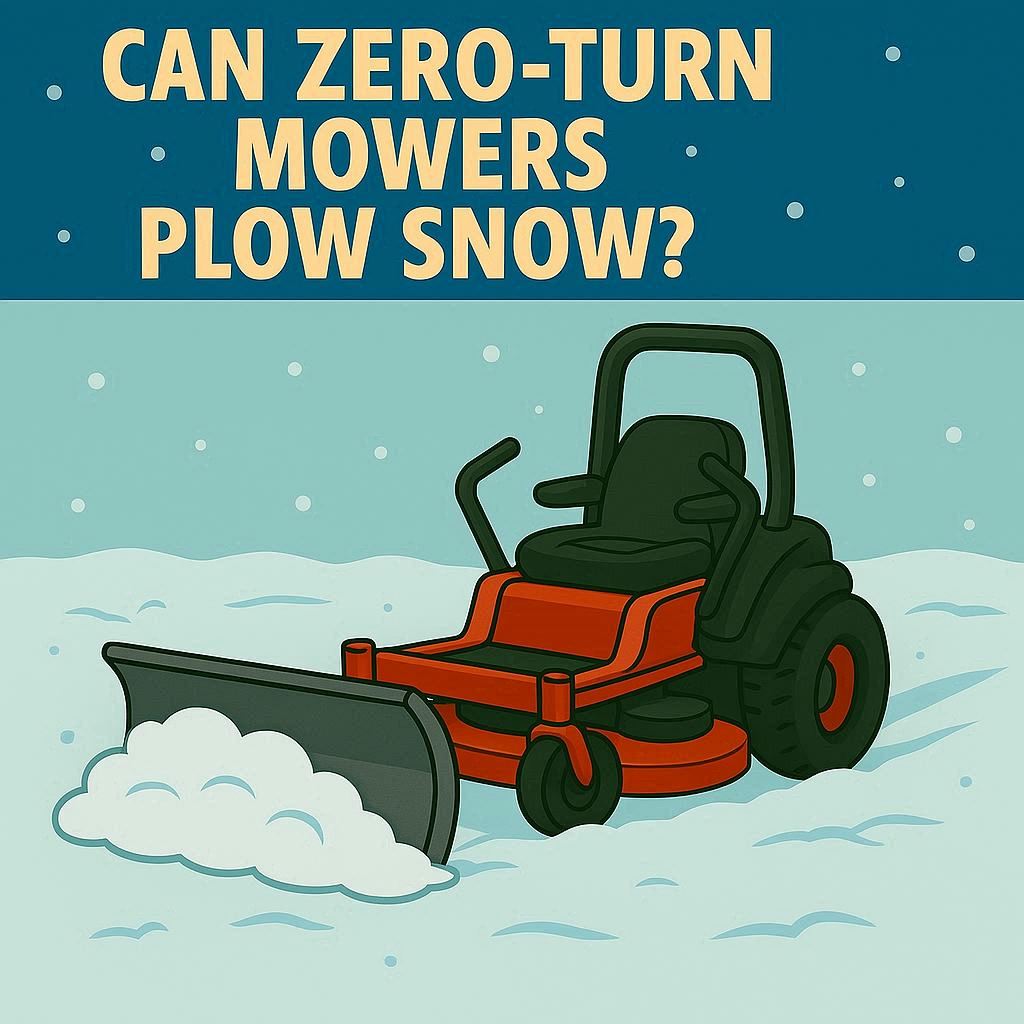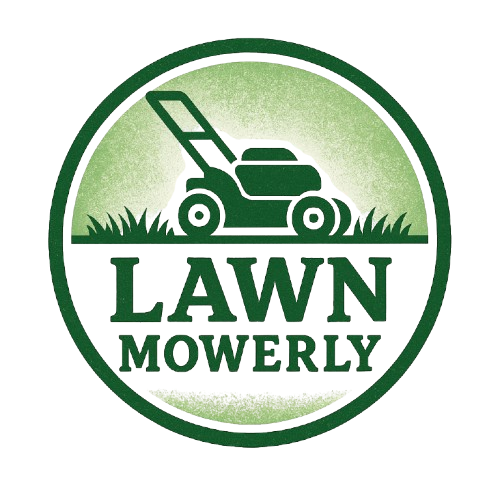
Zero turn mowers (ZTRs) are renowned for their speed, agility, and ability to make mowing large properties efficient and precise. But as winter arrives and lawns vanish beneath blankets of snow, many wonder: can a zero turn mower pull double duty as a snow plow? This comprehensive guide examines the feasibility, practicality, pros, cons, and tips for using a zero turn mower for snow removal.
The Basics of Zero Turn Mowers
Zero turn mowers are specialty riding lawn mowers designed for maximal maneuverability, powered by twin hydrostatic transmissions. Their defining feature is a near-zero turning radius, thanks to swing-arm levers controlling each rear wheel independently. ZTRs range from residential models to heavy-duty commercial units and have become the tool of choice for professional landscapers and acreage owners alike.
Designed for Lawns, Not Snow
It’s important to remember that ZTRs are primarily engineered for mowing grass, not for heavy-duty snow removal. Their construction, low ground clearance, and turf tires make them ideal for summer use—so winter conversions require thoughtful adaptation.
Zero Turn Mower Snow Plowing: Is It Possible?
Yes, zero turn mowers can be used to plow snow—if properly equipped. Several manufacturers and aftermarket companies now offer snow plow blade attachments and, more rarely, snow blower attachments designed for ZTR compatibility. Owners routinely install blades in front of the mower deck, often using DIY or commercial mounting kits.
How It Works
- Snow Blades: These are straight or slightly curved metal or polymer blades, typically 48–72 inches wide, that attach to the mower’s frame.
- Actuation: Some plows are manually angled, while premium units feature handle or foot controls for easy blade pivoting.
- Operation: ZTRs use their independent rear-drive wheels and engine power to push snow. The deck is usually left on or removed depending on the model and snow plow design.
- Traction: Weight balancing and the addition of tire chains or winter-specific tires can improve grip on snowy or icy surfaces.
Pros and Benefits of Using a Zero Turn Mower for Plowing
1. Efficiency and Maneuverability
A ZTR’s ability to turn on a dime allows for quick and precise clearing, particularly in tight pathways, sidewalks, and intricate driveways a traditional pickup might struggle to navigate. They are especially handy in settings with narrow, winding paths, or for clearing around landscape features.
2. Equipment Versatility
Leveraging a mower year-round increases equipment ROI. Homeowners or businesses can avoid buying a dedicated snow removal machine if winter snow is light or infrequent.
3. Adequate Power for Light to Moderate Snow
ZTRs have powerful engines—often between 18 and 26 hp—that can handle moderate amounts of snow (commonly up to 4–8 inches, depending on snow density and equipment setup).
4. Time and Labor Savings
Clearing snow with a ZTR (fitted with a plow) is substantially faster than shoveling by hand, especially for average-sized driveways and sidewalks.
Limitations, Drawbacks, and Risks
1. Depth and Density of Snow
While a zero turn mower can handle light to moderate snowfall effectively, it struggles with heavy or deep accumulations. Wet, dense snow or amounts over 6 inches can place excessive strain on engines, transmissions, and tires—potentially causing mechanical failure or getting the mower stuck.
2. Traction Issues
ZTRs generally come with turf tires designed for lawn protection, not snow or ice. This results in frequent spinning and a lack of control in slick conditions. Tire chains, winter tires, or even added wheel weights are essential for performance and safety.
3. Machine Wear and Tear
Snow removal creates stresses—not just from pushing weight, but from exposure to salt, cold, and moisture. This can prematurely degrade bearings, electrical systems, paint, and linkage points. Regular cleaning and lubrication are mandatory to prevent corrosion and breakdowns.
4. No Cab or Weather Protection
Unlike some garden or compact tractors, typical ZTRs offer no weather protection. Operators are fully exposed to the elements, making plowing uncomfortable and potentially hazardous in severe cold or blowing snow.
5. Limited Accessories
While companies are increasingly producing snow accessories for ZTRs, options still lag behind those for tractors and utility vehicles. Finding compatible equipment—especially for older or less common mower models—can be a challenge.
6. Unsuitable Terrain
ZTRs have low ground clearance, making them susceptible to getting stuck in deep snow or hitting hidden obstacles.
Types of Snow Attachments for Zero Turn Mowers
| Attachment Type | Description | Pros | Cons |
|---|---|---|---|
| Snow Blade/Plow | Straight/curved blade attached to the front frame | Affordable, easier to install | Limited depth, traction challenges |
| Snow Blower | Two-stage blower driven by mower PTO (rare for ZTRs) | Handles deeper snow, cleaner results | Expensive, rare, needs power take-off |
| Poly Blades | Plastic edges to protect pavers and delicate surfaces | Lightweight, gentle on surfaces | May not cut compacted snow well |
Practical Tips for Success
Assess Your Snowfall: ZTR plowing works best in regions with light to moderate, infrequent snows. For heavy, wet, or relentless snow (over 6 inches), opt for a snow blower or compact tractor instead.
Upgrade Traction: Use tire chains, winter tires, and add weights for improved performance. Avoid slopes—ZTRs aren’t safe on snowy inclines.
Routine Maintenance: Clean, lubricate, and inspect the mower thoroughly after each use in the snow. Salt and moisture accelerate rust and electrical decay.
Watch for Obstacles: Keep plow height high enough to avoid scraping curbs, landscape borders, or damaging pavers.
Safety First: Always wear cold-weather gear. Avoid plowing near high-traffic roadways with a ZTR and never use a ZTR on icy slopes.
Consider Mower Warranty: Snow plowing may void factory warranties; consult your owner’s manual and dealer before converting.
Ideal Use Cases for Zero Turn Mower Snow Plowing
- Small to medium-sized driveways (cement or smooth asphalt)
- Commercial sidewalks and pedestrian paths
- Residential walkways
- Athletic fields or recreational areas with light snow
When Not to Use a Zero Turn for Plowing
- Regions with frequent heavy snowfalls
- Steep driveways or hilly properties
- Loose gravel, soft lawns, or uneven surfaces in winter
- Conditions requiring fast work over large, open lots (a utility vehicle or truck is more efficient)
Alternatives to Zero Turn Mower Plowing
If conditions in your area exceed a ZTR’s capabilities, consider:
- Garden/Compact Tractors: Greater weight, more snow-specific attachments.
- ATVs/UTVs: Designed for off-road work; easily outfitted for snow.
- Dedicated Snow Blowers: For areas with heavy snow—self-propelled, high-power, and safer for deep accumulations.
Comparison: ZTR Snowplow vs. Standard Snowblower
- Snowblower advantages: Compact, easy to store, ideal for small areas, better maneuverability, and clear sight lines.
- Snowplow advantages: Speed, less physical effort, and better for large, open areas.
- Snowblowers are best for small spaces and frequent, quick use; snowplows attached to ZTRs excel for clearing larger, less complicated areas.
Drawbacks of Using ZTRs for Snow
- Shortens mower life if used for heavy or frequent snow plowing.
- Lower maneuverability due to attachment length.
- Needs more storage space.
- Costs for quality attachments can be high, sometimes matching that of a dedicated snowblower.
Real-World Experiences
Experienced ZTR owners report modest success plowing moderate snow, especially when using proper accessories, taking light snow in multiple passes, and attending to traction and weight distribution. However, nearly all advise against using ZTRs in regions with deep, frequent, or wet snows, highlighting the need for mechanical sympathy and good sense.
Conclusion: Should You Plow Snow with a Zero Turn Mower?
Zero turn mowers can plow snow under certain conditions—mainly light, shallow, and infrequent snowfalls on level, paved surfaces. With the right attachments and preparatory steps, they offer time savings and efficient clearing of driveways and sidewalks.
However, they are not a substitute for specialized snow removal equipment in demanding environments. Balance their convenience with the potential for extra wear and safety limitations. If you already own a ZTR and your local snowfall is modest, a snow plow attachment can extend your mower’s usefulness through winter. For serious snow, however, a dedicated snow blower, tractor, or utility vehicle remains the best investment.
Here are well-structured FAQs for “Worst Zero-Turn Mowers: My Brutally Honest Review!” — covering user concerns, brand reliability, and buying tips.
❓ Frequently Asked Questions
1. What is the worst zero-turn mower brand overall?
While opinions vary, brands like Poulan Pro, Country Clipper, and certain low-end Husqvarna or Cub Cadet models repeatedly receive poor reliability ratings and user complaints. The problems usually involve weak transmissions, cheap decks, or poor after-sales service.
2. Why are some zero-turn mowers unreliable even from well-known brands?
Even reputable companies produce both premium and entry-level models. To attract budget buyers, they sometimes cut corners in materials or components. That’s why some Husqvarna or Cub Cadet residential models may fail faster than their commercial-grade counterparts.
3. What are the most common issues with bad zero-turn mowers?
The biggest complaints include:
- Drive belt or hydrostatic transmission failures.
- Uneven cutting and poor deck airflow.
- Plastic parts breaking.
- Hard-to-find replacement parts.
- Weak customer support.
- Poor comfort and ergonomics for long mowing sessions.
4. Are cheap zero-turn mowers worth buying?
If you only mow occasionally on flat, small yards, a cheap model can be fine. But for large properties, sloped terrain, or frequent use, cheaper mowers often wear out fast and cost more in repairs over time.
5. What’s the average lifespan of a zero-turn mower?
A quality commercial-grade mower can last 2,000–3,000 hours, while cheaper residential mowers often last only 400–800 hours with heavy use. Proper maintenance (oil, blades, filters, and belts) can extend lifespan significantly.
6. Can you fix most of these issues yourself?
Yes — many problems like belt replacements, oil changes, and filter cleaning can be DIY-friendly. However, hydrostatic transmission leaks, deck alignment, or electrical failures usually require professional service.
7. How do I know if a zero-turn mower has a weak transmission?
Check the hydrostatic drive model number (e.g., Hydro-Gear EZT vs ZT-2800 or ZT-3100). Entry-level drives (EZT) are fine for light use but fail quickly under heavy loads or slopes. Always look for ZT-2800 or higher for durability.
8. What zero-turn mower brands have the best reputation?
Highly rated and durable brands include:
- John Deere (ZTrak commercial line)
- Scag
- Ferris
- Bad Boy (commercial series)
- Exmark
- Toro TimeCutter or Titan series
These tend to offer better construction, stronger decks, and smoother operation.
9. What should I check before buying a used zero-turn mower?
Inspect the deck for cracks or warping, listen for hydrostatic whine, check belts and spindles, verify hour meter accuracy, and ask for service history. Avoid heavily used commercial mowers with poor maintenance.
10. Why do some people regret buying zero-turn mowers?
Regret often comes from mismatched expectations — buyers think all zero-turns perform the same, but some are designed for small lawns only. Others underestimate maintenance costs, comfort issues, or the learning curve of driving one.
11. Are all residential zero-turn mowers bad?
Not necessarily. Residential models from Toro, Hustler Raptor, or Ariens IKON offer solid performance if used within their limits (1–2 acres, flat terrain). Problems arise when they’re pushed beyond design specs.
12. Is dealer support really that important?
Yes — even a great mower can become a nightmare without local dealer or parts support. A mower brand with poor parts availability or unresponsive service will cost time and money when breakdowns occur.
13. What features make a mower “good” compared to bad ones?
Look for:
- Welded steel deck (7-10 gauge).
- Hydro-Gear ZT-2800+ transmission.
- Quality engine (Kawasaki FR/FS, Kohler Command, Briggs Commercial).
- Comfortable, adjustable seat with suspension.
- Good parts network and solid warranty.
14. How can I avoid buying a bad zero-turn mower online?
Always read verified buyer reviews, check YouTube test videos, and research the exact model’s specs (not just the brand name). Avoid generic or “big box store exclusive” models that don’t match commercial dealer specs.
15. Is it better to buy used commercial or new residential zero-turns?
A lightly used commercial mower often outperforms a brand-new cheap residential mower. They have tougher decks, stronger transmissions, and better long-term reliability — as long as they’ve been maintained well.
16. What’s the easiest way to spot a poorly built zero-turn mower?
- Feels too light for its deck size.
- Uses plastic components where metal should be.
- Sloppy welds or thin frame.
- Jerky hydro drive when turning.
- No anti-scalp wheels or deck supports.
17. Are zero-turn mowers good for hills?
Most residential zero-turns struggle on steep slopes due to traction loss. Only certain commercial units with larger tires and stronger hydros are designed for hill work. For hilly yards, a steering wheel zero-turn or garden tractor may be safer.
18. What’s the most overrated zero-turn mower?
Some users consider the Husqvarna Z254 and Cub Cadet Ultima ZT1 overrated because of aggressive marketing despite common issues like deck vibration and weak transaxles. They work for light use but not large or rough yards.
19. Are all bad reviews accurate?
Not always — some are user error or poor maintenance. But when the same issues appear across hundreds of reviews (e.g., weak belts, cracked decks), it’s a design or quality issue worth avoiding.
20. What’s the final takeaway before buying a zero-turn mower?
Focus less on brand logos and horsepower, and more on deck construction, transmission type, comfort, and service access. Avoid low-end versions of good brands, read long-term reviews, and buy from a dealer who’ll support you after the sale.

I’m David man behind Lawn Mowerly; I’ve been dealing with lawnmowers and Tractors with my father since I was a kid. I know every make and model and what each one is capable of and love helping people find the perfect equipment for their needs.
